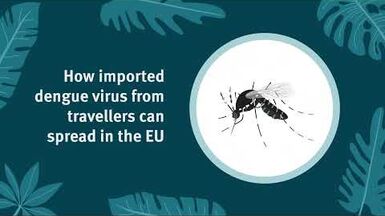Comparative community burden and severity of seasonal and pandemic influenza: results of the Flu Watch cohort study
In a large community study (Flu Watch), cohorts were prospectively studied across the UK during six periods (2006-2010) with the main aim to compare the burden and the severity of seasonal and pandemic influenza across different age groups over time.
Hayward AC, Fragaszy EB, Bermingham A, Wang L. Copas A, Edmunds WJ, Ferguson N, Goonetilleke N, Harvey G, Kovar J, Lim MSC, McMichael A, Millett ERC, Nguyen-Van-Tam JS. Nazareth I, Pebody R. Tabassum F, Watson JM, Wurie FB, Johnson AM Zambon M, on behalf of the Flu Watch Group. The Lancet Respiratory Medicine, Early Online Publication, doi:10.1016/S2213-2600(14)70034-7.
In a large community study (Flu Watch), cohorts were prospectively studied across the UK during six periods (2006-2010) with the main aim to compare the burden and the severity of seasonal and pandemic influenza across different age groups over time. Demographic, clinical, virological and serological data were collected in five prospective cohorts during the six studied periods.
The study found that the infection rate (pre-and post-season titres rise in serology) in unvaccinated people each winter was in average 18% (CI: 16-22) and that after adjustment for age, 23% (CI: 13-34) of serologically confirmed infections were symptomatic. Out of the serologically confirmed persons, 25% (CI: 8-35) were PCR positive for influenza and out of those, 17% (CI: 10-26) sought medical attention. Overall, symptoms were substantially more severe in patients infected (PCR +) by A(H3N2) than in patients infected by A(H1N1)pdm09 virus.
ECDC Comment:
This large community study provides further understanding of the “clinical severity pyramid” of influenza over a number of influenza seasons and the first waves of the 2009 pandemic. According to the authors, the high incidence rate, including during recent pandemic studies, the percentage of symptomatic persons and medical consultation rate were consistent with results from other studies. However, the authors highlight that the proportion of PCR positive patients among infected persons was 22 times higher than rates estimated across winter seasons by regular sentinel monitoring. Besides the low sensitivity of current surveillance system, these results raise the question of the extent to which mild and asymptomatic cases contribute to the spread of the disease. In addition, the estimates of clinical consultation rate, 17% of persons with PCR+ or 8% of serologically confirmed persons, seem to be low.
Comparisons with results from other studies are difficult as health care seeking behaviour may differ from country to country. Finally, as reported in earlier studies, symptoms were substantially more severe with A(H3N2) infection than with A(H1N1)pdm09 infection. Other studies are needed to understand the real impact of influenza in the community and possibly to improve the surveillance of influenza in primary care.






